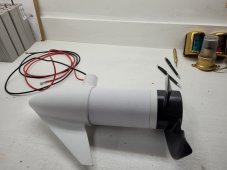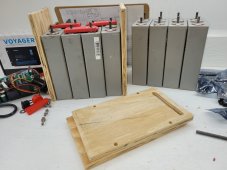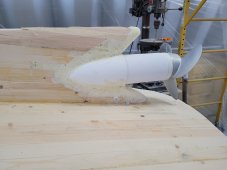Hello - For the past 20 years I have been using a 40lb thrust Minn Kota trolling motor as the main thrust for a small inflatable boat used for fishing. I always used a traditional wet acid battery however am finally upgrading to:
- Minn Kota Traxis 50 or 55lb thrust motor
- Renogy 12V 50 Ah & 100Ah LiFePO4 Lithium Iron Phosphate Battery Deep Cycle https://ca.renogy.com/100ah-12-volt-smart-lithium-iron-phosphate-battery/
The reason I bought two batteries is due to a 40% sale by Renogy so i bought the 100ah as the main trolling battery and the 50ah one solely as a backup. However I am trying to understand this statement by Minn Kota:
""Minn Kota trolling motors can run on Lithium Ion batteries. However, they are specifically designed to run on traditional lead acid batteries (flooded, AGM or GEL). Lithium Ion batteries maintain higher voltages for longer periods of time than lead acid. Therefore, running a Minn Kota trolling motor at speeds higher than 85% for a prolonged period could cause permanent damage to the motor. The LiFePO4 Lithium batteries can be used with our motor. LiFePO4 batteries that have a maximum continuous output current ratings need to be higher than the maximum current ratings of the trolling motor or the battery will turn off."
When I asked for clarification on this statement they replied:
What our statement is referring to is if the battery lists a maximum current rating, meaning the maximum load in amps they allow on the battery, that must be less than the maximum amp draw of our motor.
I am still confused, according the chart below by Minn Kota the 50/55lb thrust motor both have a maximum 50 amp draw. Are all they trying to say is the ah rating on the battery should be higher than the motor? So a 100 ah battery should be fine with the 50/55lb motor but how about the 50 ah battery which is the same rating as the battery?

- Minn Kota Traxis 50 or 55lb thrust motor
- Renogy 12V 50 Ah & 100Ah LiFePO4 Lithium Iron Phosphate Battery Deep Cycle https://ca.renogy.com/100ah-12-volt-smart-lithium-iron-phosphate-battery/
The reason I bought two batteries is due to a 40% sale by Renogy so i bought the 100ah as the main trolling battery and the 50ah one solely as a backup. However I am trying to understand this statement by Minn Kota:
""Minn Kota trolling motors can run on Lithium Ion batteries. However, they are specifically designed to run on traditional lead acid batteries (flooded, AGM or GEL). Lithium Ion batteries maintain higher voltages for longer periods of time than lead acid. Therefore, running a Minn Kota trolling motor at speeds higher than 85% for a prolonged period could cause permanent damage to the motor. The LiFePO4 Lithium batteries can be used with our motor. LiFePO4 batteries that have a maximum continuous output current ratings need to be higher than the maximum current ratings of the trolling motor or the battery will turn off."
When I asked for clarification on this statement they replied:
What our statement is referring to is if the battery lists a maximum current rating, meaning the maximum load in amps they allow on the battery, that must be less than the maximum amp draw of our motor.
I am still confused, according the chart below by Minn Kota the 50/55lb thrust motor both have a maximum 50 amp draw. Are all they trying to say is the ah rating on the battery should be higher than the motor? So a 100 ah battery should be fine with the 50/55lb motor but how about the 50 ah battery which is the same rating as the battery?






